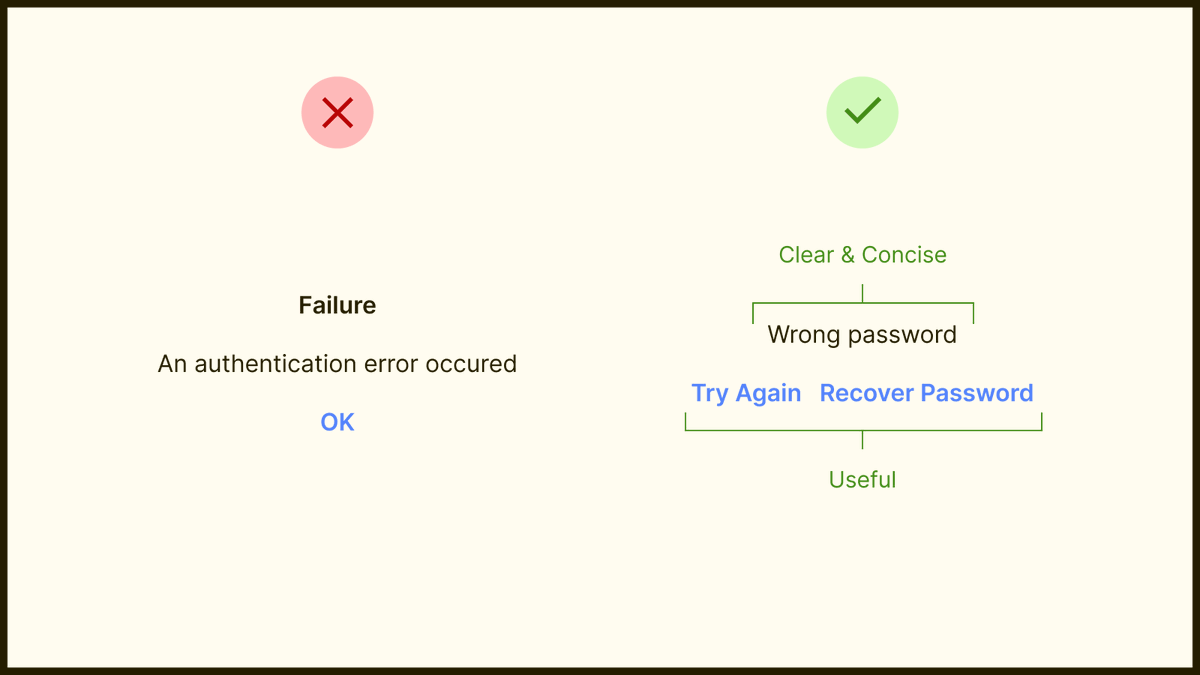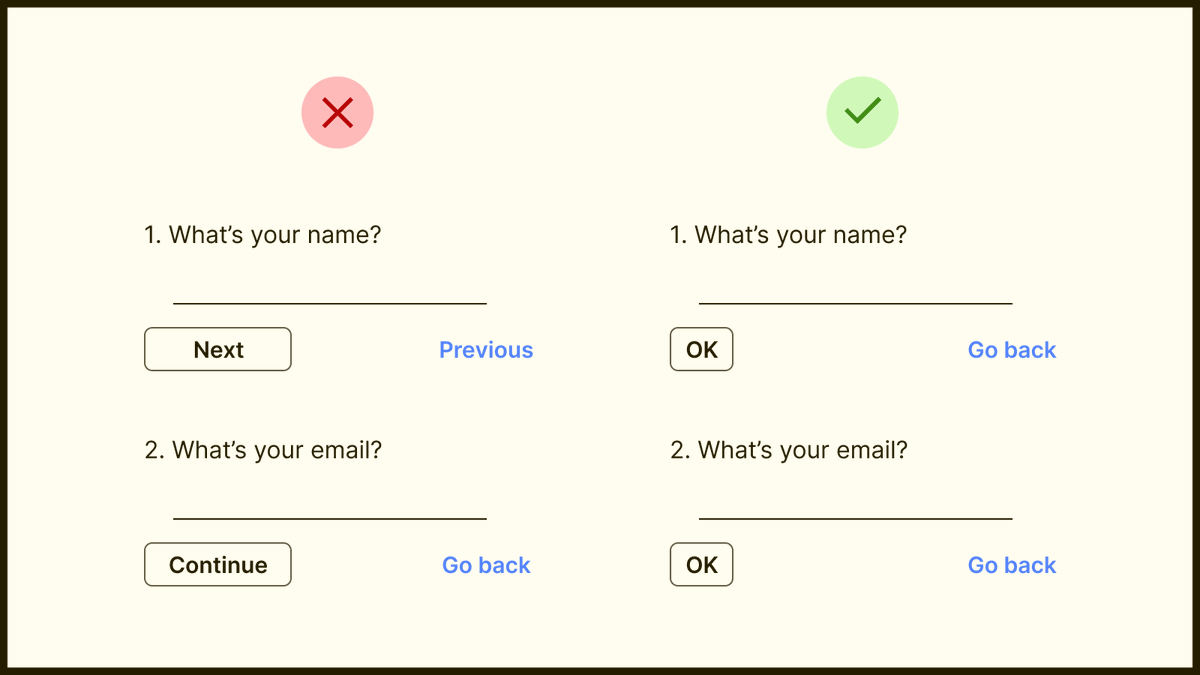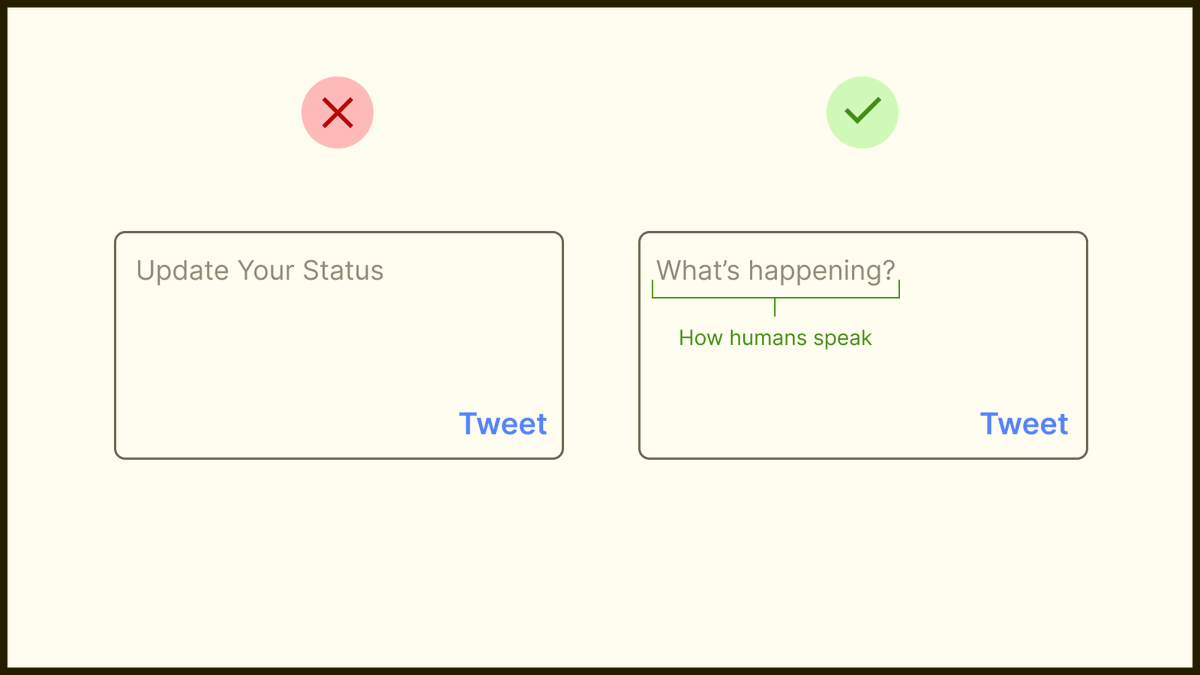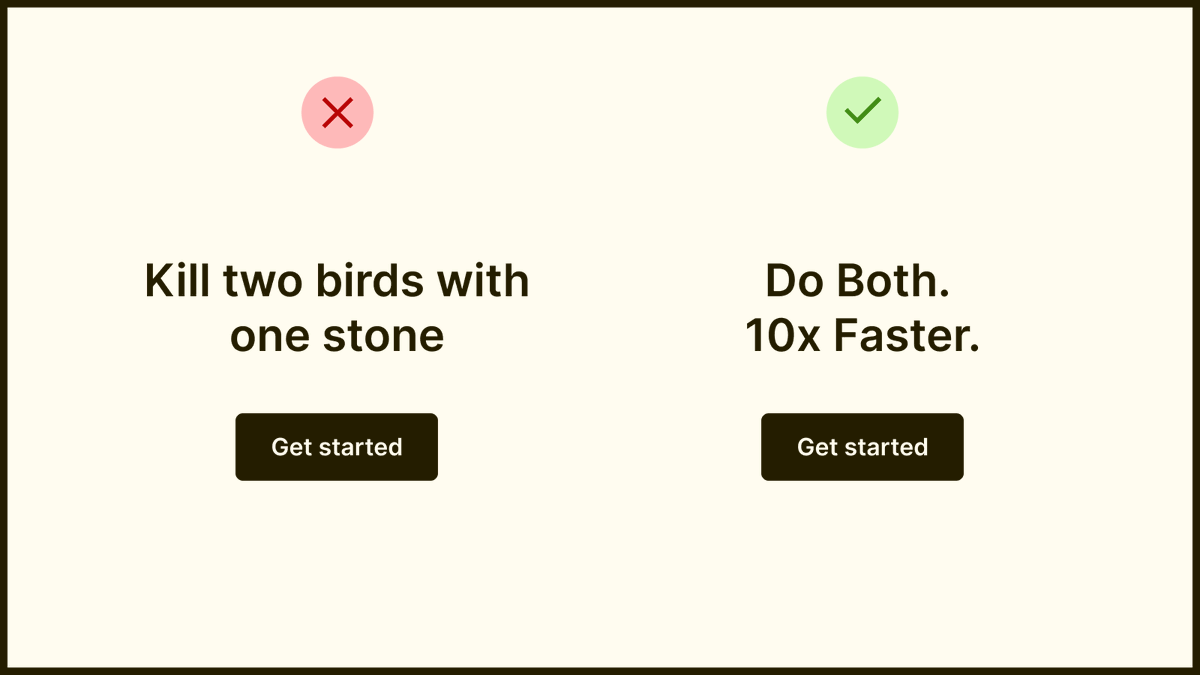How to Write Great Microcopy.
 https://abs.twimg.com/emoji/v2/... draggable="false" alt="🔥" title="Fire" aria-label="Emoji: Fire"> 40 tips by @antdke
https://abs.twimg.com/emoji/v2/... draggable="false" alt="🔥" title="Fire" aria-label="Emoji: Fire"> 40 tips by @antdke
1) Be clear, concise, and useful
Duh. This one’s obvious.
People don’t like being forced to read. Identify the most important info and say that.
Duh. This one’s obvious.
People don’t like being forced to read. Identify the most important info and say that.
2) Use consistent wording
Another obvious one —don’t use synonyms.
If one button says “Next”, don’t also use “Proceed” or "Continue” for other buttons.
Inconsistency confuses users. They may think “Next” and “Proceed” lead to different results.
Another obvious one —don’t use synonyms.
If one button says “Next”, don’t also use “Proceed” or "Continue” for other buttons.
Inconsistency confuses users. They may think “Next” and “Proceed” lead to different results.
3) Create a microcopy framework
To ensure your wording stays consistent, create a doc for you and your team that houses your most common words.
Get everyone singing the same song.
To ensure your wording stays consistent, create a doc for you and your team that houses your most common words.
Get everyone singing the same song.
4) Be conversational
Talk like two co-workers over lunch —casual, friendly tone in a professional setting.
Talk like two co-workers over lunch —casual, friendly tone in a professional setting.
5) Use humor and idioms carefully
The tone is casual, but the same jokes can get stale.
Or even worse, no one gets it.
The tone is casual, but the same jokes can get stale.
Or even worse, no one gets it.
6) Highlight your brand’s character
Even so, make routine tasks memorable by adding a bit of flair.
If your brand is playful, don’t be afraid to add emojis.
Even so, make routine tasks memorable by adding a bit of flair.
If your brand is playful, don’t be afraid to add emojis.
7) Be wary of word translations
You wouldn’t want your product to break in other countries, right?
Here’s a good article from Dropbox to help with this.
https://medium.com/dropbox-design/design-for-internationalization-24c12ea6b38f">https://medium.com/dropbox-d...
You wouldn’t want your product to break in other countries, right?
Here’s a good article from Dropbox to help with this.
https://medium.com/dropbox-design/design-for-internationalization-24c12ea6b38f">https://medium.com/dropbox-d...
8) (Almost) always use the active voice
It’s stronger and easier to understand than the passive voice.
Use it when you need to signal who or what caused an action.
It’s stronger and easier to understand than the passive voice.
Use it when you need to signal who or what caused an action.
9) Use the passive voice (sometimes)
It has its place.
Use it when the action is more important than what caused (subject) the action.
It has its place.
Use it when the action is more important than what caused (subject) the action.

 Read on Twitter
Read on Twitter









